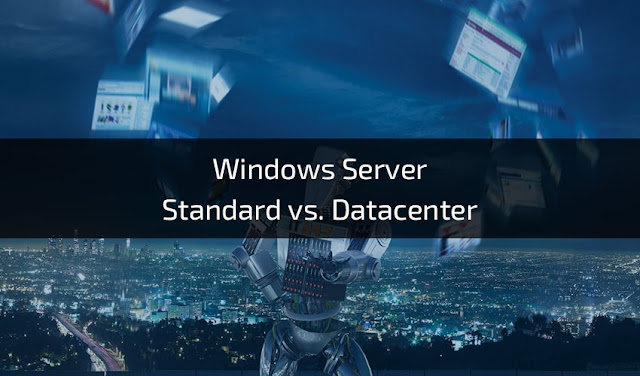Windows Server Standard vs. Datacenter Edition
Windows Server Standard vs. Datacenter Edition, Choosing the Right Version for Your Needs. When it comes to deploying Windows Server for your organization’s infrastructure, one of the key decisions you’ll face is choosing between Windows Server Standard and Windows Server Datacenter editions. Both versions have their unique features and use cases, and making the right choice is crucial for optimizing your server environment. In this article, we’ll explore the differences between these two editions to help you make an informed decision.
Understanding Windows Server Editions
Before diving into the comparison, let’s briefly review what Windows Server Standard and Datacenter editions are:
Windows Server Standard Edition
Windows Server Standard Edition is designed for small to medium-sized businesses and provides essential server functionalities. It includes features such as server virtualization, file and print services, Active Directory, and more. This edition is suitable for organizations that do not require extensive virtualization capabilities or have a limited number of virtual machines (VMs).
Windows Server Datacenter Edition
On the other hand, Windows Server Datacenter Edition is tailored for larger enterprises with extensive virtualization needs. It offers all the features available in the Standard edition, along with additional benefits like unlimited virtualization rights, Software-Defined Networking (SDN) capabilities, and advanced security features. Datacenter is ideal for organizations with a high number of VMs or those looking to build a robust, scalable datacenter infrastructure.
Key Differences
Now that we have a basic understanding of both editions, let’s delve into the key differences between Windows Server Standard and Datacenter editions:
1. Virtualization Rights
One of the most significant distinctions between the two editions is the virtualization rights they offer. Windows Server Standard allows you to run two virtual instances of the operating system on a single physical server. In contrast, Windows Server Datacenter grants you unlimited virtualization rights, enabling you to run an unlimited number of VMs on a single host. This makes Datacenter the preferred choice for organizations with extensive virtualization requirements.
2. Software-Defined Networking (SDN)
Windows Server Datacenter includes Software-Defined Networking capabilities, which allow you to centrally manage and automate network policies and configurations. This feature is essential for organizations with complex networking needs and dynamic datacenter environments. Standard edition lacks SDN functionality.
3. Price
Naturally, the pricing differs significantly between Windows Server Standard and Datacenter editions. Datacenter edition is more expensive due to its additional features and unlimited virtualization rights. Smaller businesses with budget constraints often opt for the Standard edition, while larger enterprises with more extensive infrastructure requirements may justify the investment in Datacenter.
4. Advanced Security Features
Windows Server Datacenter comes with advanced security features, such as Shielded Virtual Machines and Host Guardian Service, which enhance the protection of virtualized workloads. These security enhancements are not available in the Standard edition.
5. Licensing Flexibility
Windows Server Standard offers flexibility in licensing for businesses that have fewer virtualization needs. It allows organizations to purchase licenses based on the number of physical processors in use. Windows Server Datacenter, on the other hand, is licensed per physical processor. This can be advantageous for businesses running multiple VMs on high-performance servers.
Which Edition Is Right for You?
Now that you’re aware of the differences, the question remains: Which edition is the right fit for your organization? The answer depends on your specific needs and budget constraints:
Choose Windows Server Standard if you run a small to medium-sized business with limited virtualization requirements. It’s cost-effective and provides essential server functionalities.
Opt for Windows Server Datacenter if you have a large enterprise with extensive virtualization needs, complex networking configurations, and a budget to accommodate the additional cost. Datacenter is the go-to choice for scalability and advanced features. Read more article: How to Allow RDP on Windows Server 2019?
Conclusion
In summary, the choice between Windows Server Standard and Datacenter editions boils down to your organization’s size, virtualization needs, budget, and desire for advanced features. Both editions offer robust server solutions, but they cater to different segments of the market. By carefully evaluating your requirements, you can make an informed decision that aligns with your IT infrastructure goals. Remember that flexibility is key, and you can always adjust your server edition as your organization evolves and grows.
In the end, whether you choose Windows Server Standard or Datacenter, Microsoft provides robust support and a thriving ecosystem of tools and resources to help you make the most of your Windows Server deployment. Make your choice wisely, and your server environment will be well-equipped to meet your business’s needs.

.jpg)

Comments
Post a Comment